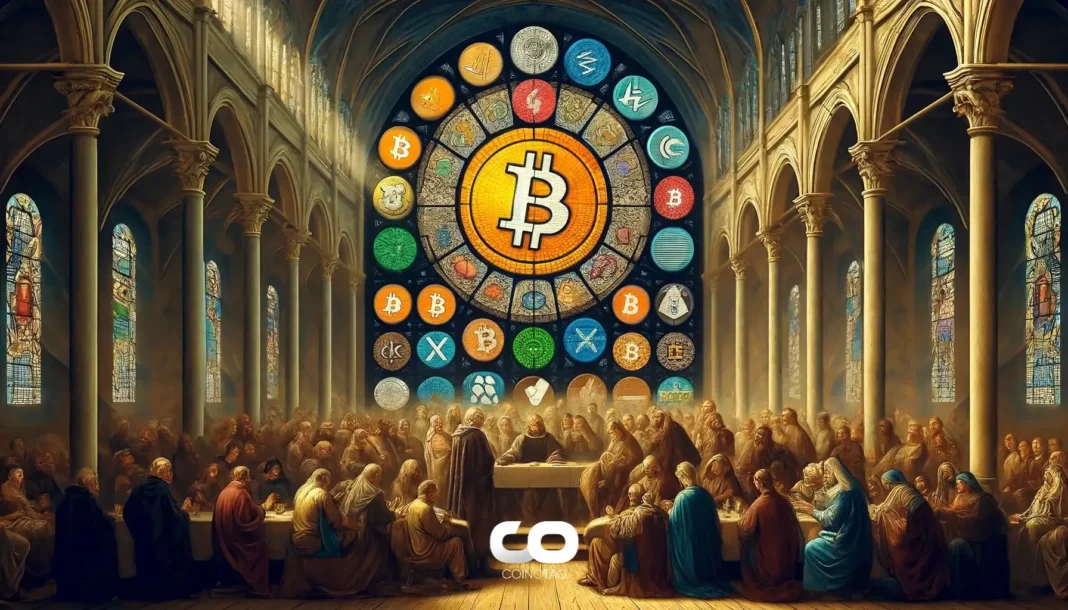-
Ripple’s launch of the XRPL EVM Sidechain marks a significant milestone in blockchain interoperability, enabling seamless Ethereum compatibility and native XRP integration across web3 applications.
-
This development enhances the utility and flexibility for developers within the XRP Ledger ecosystem, potentially driving increased liquidity and token diversity.
-
According to Ripple CTO David Schwartz, the sidechain uses XRP as the native gas token, while Peersyst Technology CEO Ferran Prat highlights this as the beginning of a broader ecosystem expansion.
Ripple’s XRPL EVM Sidechain launch boosts Ethereum compatibility and XRP utility, fostering developer engagement and expanding DeFi opportunities on the XRP Ledger.
XRPL EVM Sidechain Launch: Expanding Ethereum Compatibility and XRP Utility
The recent launch of the XRPL EVM Sidechain by Ripple represents a pivotal advancement in blockchain technology, bridging the XRP Ledger with Ethereum’s extensive ecosystem. This integration allows developers to deploy Ethereum-compatible decentralized applications (dApps) directly on the XRPL, utilizing XRP as the native gas token. By enabling seamless interaction between these two major networks, Ripple is positioning the XRPL as a versatile platform that supports a wider range of decentralized finance (DeFi) activities and token operations.
This interoperability is expected to attract new projects and liquidity providers, expanding the XRPL’s market engagement. With over 6 million existing XRPL wallets now gaining access to Ethereum Virtual Machine (EVM) tools, the sidechain fosters an environment ripe for innovation and cross-chain collaboration. The enhanced compatibility not only broadens the technical capabilities of the XRPL but also increases its appeal to developers familiar with Ethereum’s robust infrastructure.
Collaborative Efforts Driving Blockchain Interoperability
The deployment of the XRPL EVM Sidechain was a collaborative effort involving Ripple, Peersyst Technology, and Axelar, each bringing specialized expertise to the project. Ripple CTO David Schwartz emphasized the strategic choice of using XRP as the native gas token, which streamlines transaction processing and reduces friction for users transitioning between Ethereum and XRPL environments. Ferran Prat, CEO of Peersyst Technology, described the launch as the “start of broader ecosystem expansion,” signaling ongoing developments aimed at enhancing cross-chain functionality.
Such partnerships underscore a growing trend in the blockchain sector toward interoperability solutions that break down silos between distinct networks. By leveraging shared protocols and sidechain architectures, projects like the XRPL EVM Sidechain aim to create a more connected and efficient decentralized ecosystem, ultimately benefiting developers, investors, and end-users alike.
Implications for DeFi and Market Dynamics
The integration of Ethereum compatibility into the XRPL ecosystem is poised to reshape decentralized finance landscapes by increasing token diversity and liquidity flows. Drawing parallels to Avalanche’s successful C-Chain implementation, industry analysts anticipate a rise in XRP’s total value locked (TVL) as new DeFi protocols and liquidity pools emerge on the sidechain. This expansion could enhance the XRPL’s competitiveness in attracting institutional and retail participants seeking scalable and interoperable blockchain solutions.
Moreover, the sidechain’s launch is expected to stimulate developer interest and community engagement, fostering a vibrant ecosystem where innovative financial products and services can flourish. As the XRPL continues to evolve, these advancements may also prompt regulatory bodies to scrutinize cross-chain activities more closely, although no formal statements have been issued to date.
Future Outlook and Strategic Positioning
Ripple’s initiative with the XRPL EVM Sidechain aligns with broader industry trends emphasizing cross-chain interoperability and enhanced user experience. By enabling native XRP transactions within Ethereum-compatible environments, Ripple is not only expanding the technical capabilities of its ledger but also reinforcing its strategic positioning in the competitive blockchain space. This move is likely to facilitate further institutional adoption and integration with existing Ethereum-based protocols, creating new avenues for growth and collaboration.
As Ferran Prat succinctly put it, the launch “marks the start of a broader move toward interoperability,” highlighting Ripple’s commitment to fostering a connected and scalable blockchain ecosystem. Stakeholders and developers are encouraged to explore the new opportunities presented by this integration and contribute to the ongoing evolution of decentralized finance.
Conclusion
The XRPL EVM Sidechain launch by Ripple signifies a transformative step toward enhanced blockchain interoperability, combining the strengths of XRP Ledger and Ethereum networks. This development promises increased utility for XRP, expanded developer tools, and greater liquidity within the XRPL ecosystem. As the sidechain gains traction, it is set to influence DeFi dynamics and institutional engagement, underscoring Ripple’s role in shaping the future of cross-chain finance.







